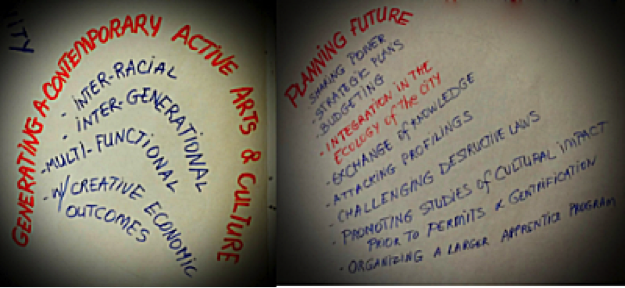By: Darryl WELLINGTON
Certain words have become indispensable to survival in today’s hi-tech society.
One among those words is “network.” A “network” is a hubbub of computer systems, or social and business relationships. “Networking” is a necessary employment tool. It’s the ability to connect with business associates and peers, make important friendships, and alliances with like-minded individuals. It’s a maxim that success today depends on networking!
Visually, “a network” is often represented by a group of computers, or human avatars with running lines in random sprawling configurations, or in top and bottom stacks, connecting them socially, intellectually, or financially. These representations truthfully convey the drive behind competitive, disordered, and hierarchical networks in which every participant is an individualistic “player” seeking selfish advantages, money, or corporate domination.

But sometimes people all across the world are represented linked in a circle. It’s the circle that should make you go, hmmmm? It’s the visual representation that has the oldest spiritual and historical roots. For centuries untold, in the oldest religions, the most honored symbol of the human connection, the great unity, or the “network” has been the Mandala.
What is it? The Mandala (a Sanskrit word loosely translated as “circle”) is an image respected and embraced in Eastern religions. It was popularized in the West by the work of 20th century psychologist and philosopher Carl Jung. It appears today in a diversity of ritual ceremonies. Perhaps the image is best defined as “an integrated structure organized around a unifying center.”
It’s been called a cosmic diagram which seeks to show our relationship to the infinite. And illustrating that our relationship isn’t random. It’s purposeful, intentional, and timeless.
Two and three dimensional Mandalas include: ancient religious iconography highlighting deities in the center, Native American teepees (which are cone-shapes built around a pole representing the unifying world axis) and “geodesic domes” the ideal energy efficient homes popularized in the 1960’s by Buckminster Fuller. Today mandalas may have reached a new height of popularity because of the work of Tibetan monks who travel the world, creating images in sand.
The Mandala for us at conNECKtedTOO is a symbol of why TINY businesses and History are an integral part of the global economy. The Mandala represents a seed, growth and a journey. The “network” grows from small beginnings. It is spawned locally, by TINY businesses, independent stores, and local service providers.
The Mandala represents history. It symbolizes the importance of remembering the history of businesses and schools which have shaped neighborhoods
Can the Mandala be a spiral which symbolizes the continuity between generations coming and generations past?
The mandala reminds us that the global economy is not sprawling chaos. It’s an ecosystem. And inside the ecosystem: THE TINY IS POWERFUL!!!!




